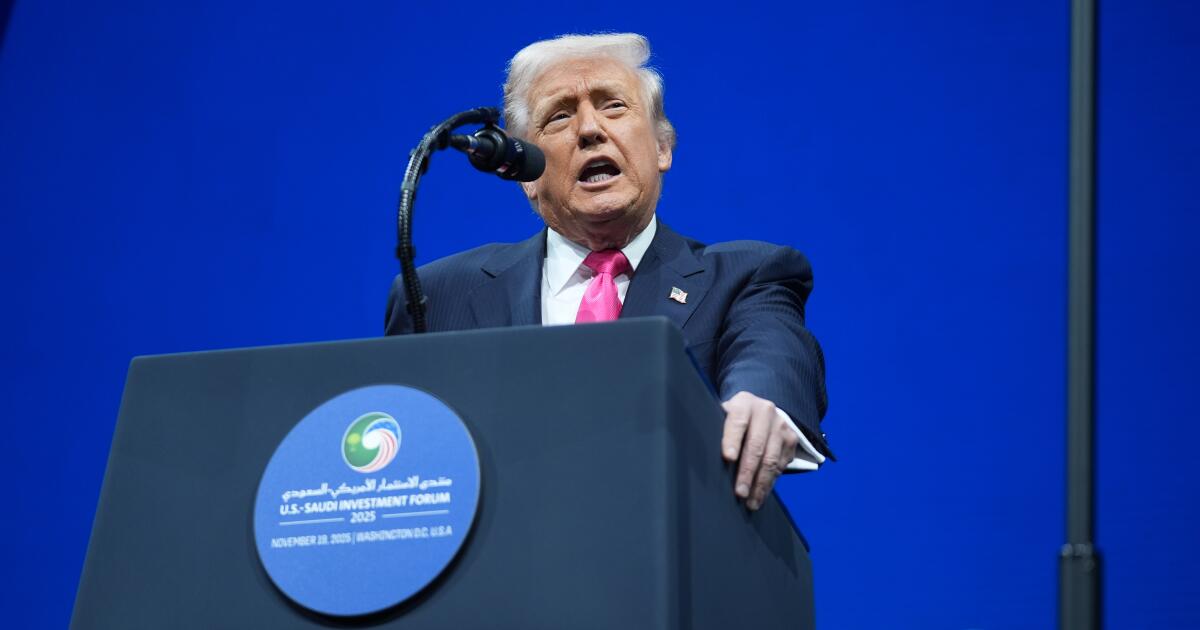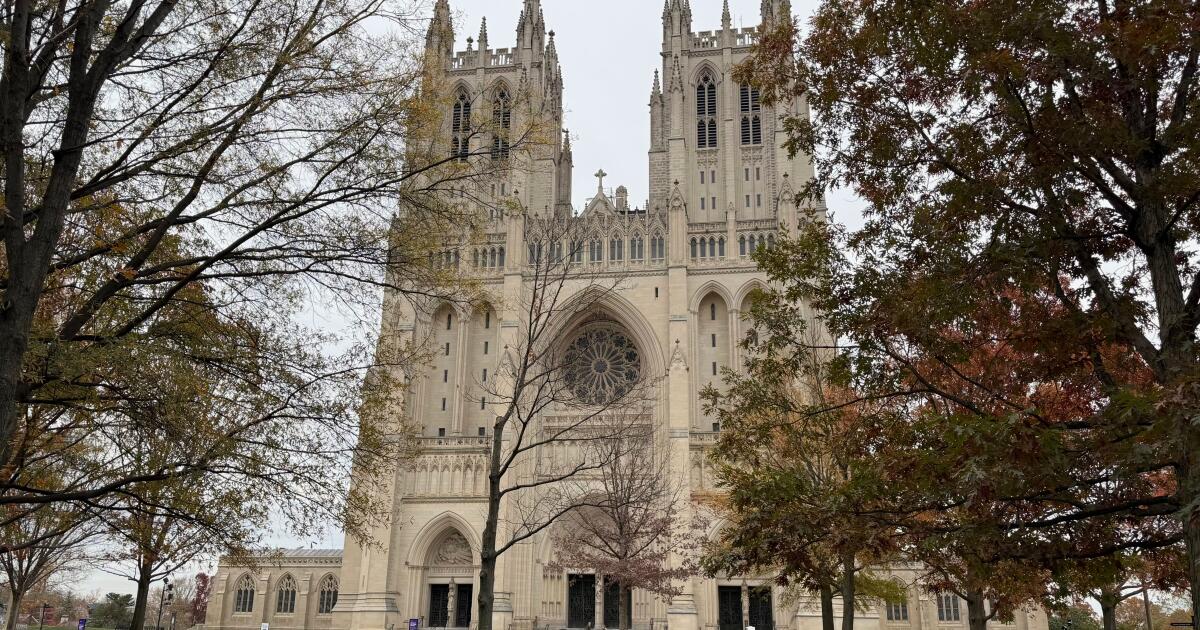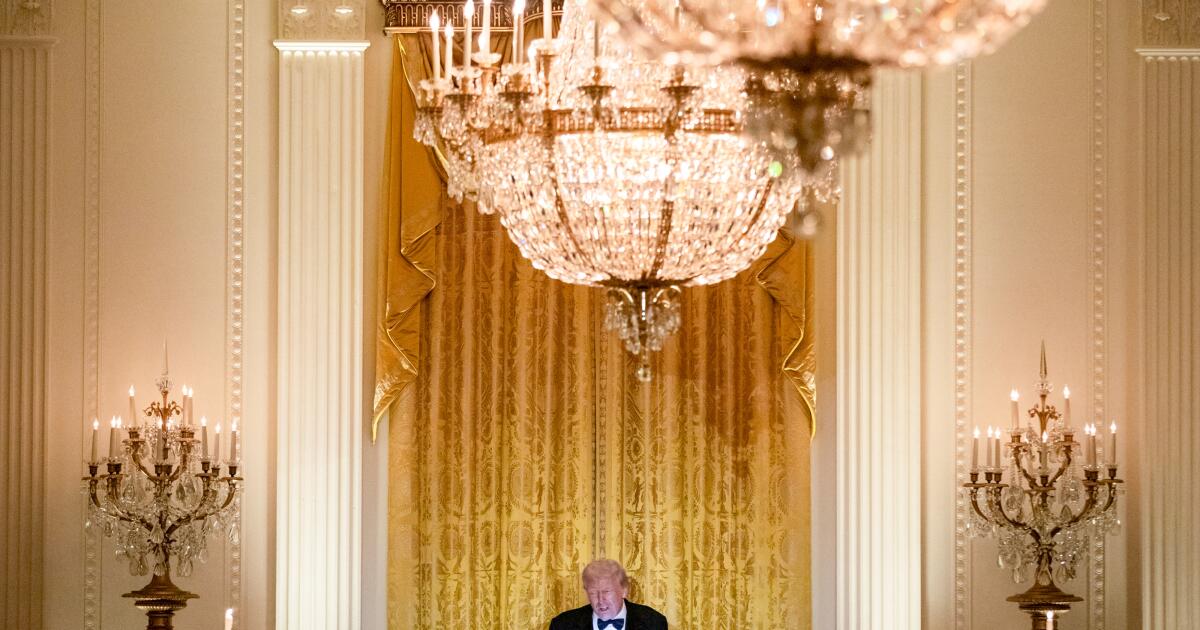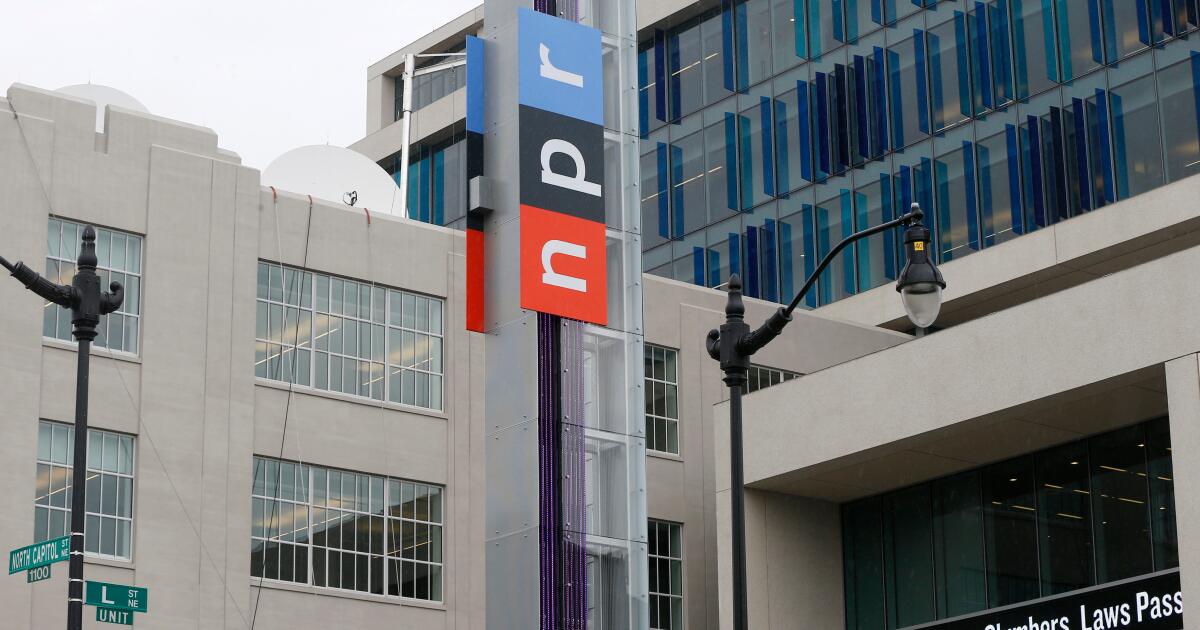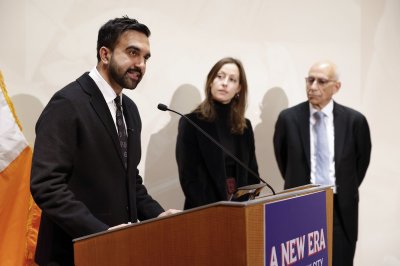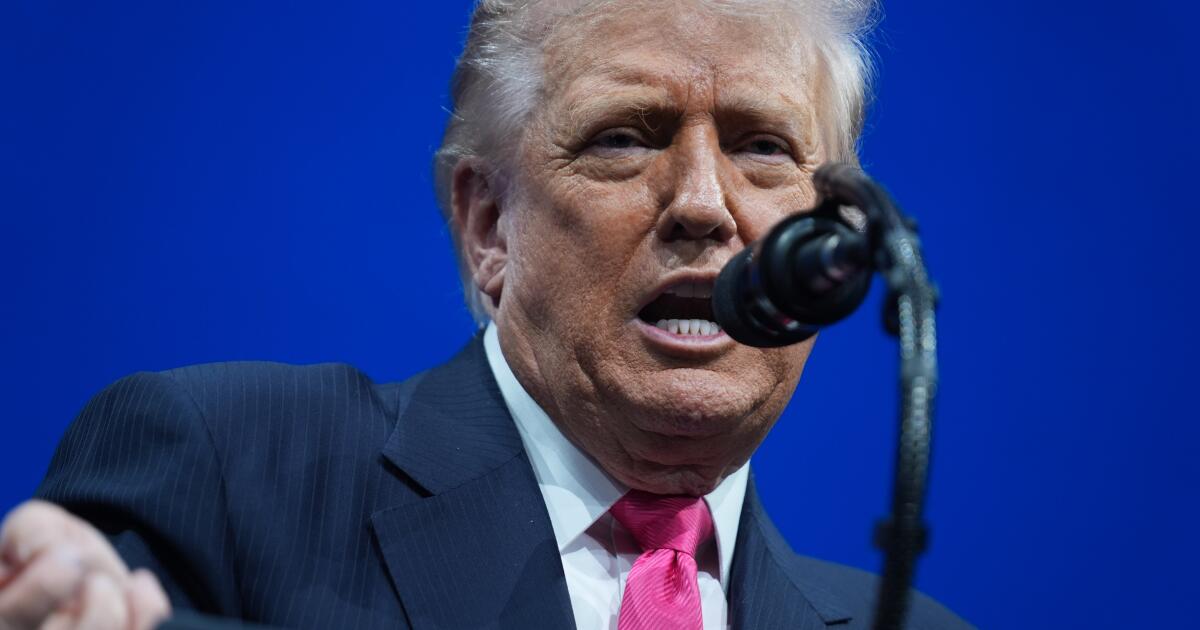San Francisco Bay Area Democrat Eric Swalwell, a nettlesome foil and frequent target of President Trump and Republicans, on Thursday announced his bid for California governor.
The congressman declared his bid during an appearance on the ABC late-night show hosted by Jimmy Kimmel, adding a little Hollywood flourish to a crowded, somewhat sleepy race filled with candidates looking for ways to catch fire in the 2026 election.
Voter interest in the race remains relatively moribund, especially after two of California’s most prominent Democrats — former Vice President Kamala Harris and current U.S. Sen. Alex Padilla — opted to skip the race after months of speculation. About 44% of registered voters said in late October that they had not picked a preferred candidate to lead California, which is the most populous state in the union and has the fourth-largest economy in the world.
The lack of a blockbuster candidate in the race, however, continues to entice others to jump in. Earlier this week, billionaire hedge fund founder Tom Steyer announced his bid, and other well-known Democrats are exploring a possible run.
Swalwell, a 45-year-old former Republican and former prosecutor who unsuccessfully ran for president in 2020, said his decision was driven by the serious problems facing California and the threats posed to the state and nation with Trump in the White House.
“People are scared and prices are high, and I see the next governor of California having two jobs — one to keep the worst president ever out of our homes, streets and lives,” Swalwell said in an interview with The Times. “The second job is to bring what I call a new California, and that’s especially and most poignantly on housing and affordability in a state where we have the highest unemployment rate in the country, and the average age for a first-time homebuyer is 40 years old, and so we need to bring that down.”
Gov. Gavin Newsom cannot run for reelection because of term limits, and he is currently weighing a 2028 presidential bid.
None of the candidates in the race, including Swalwell, possess the statewide notoriety, success or fundraising prowess of California’s most recent governors: Newsom, California political icon Jerry Brown and movie star Arnold Schwarzenegger.
“If you look at the past three governors, they’ve all had personalities,” said Jim DeBoo, Newsom’s former chief of staff, at a political conference at USC on Tuesday. “When you’re looking at the field right now, most people don’t know” much about the candidates in the crowded race despite their political bona fides.
Nearly a dozen prominent Democrats and Republicans are running for governor next year, including: former Rep. Katie Porter of Irvine, former Los Angeles Mayor Antonio Villaraigosa: Riverside County Sheriff Chad Bianco, former U.S. Health and Human Services Secretary Xavier Becerra, state Supt. of Public Instruction Tony Thurmond; former Controller Betty Yee and conservative commentator Steve Hilton. And speculation continues to swirl about billionaire real estate developer Rick Caruso and Atty. Gen. Rob Bonta possibly entering the race.
On Thursday, Thurmond proposed a tax on the wealthy to fund education, healthcare, firefighting and construction. The proposal was seen in part as a subtle dig at Steyer and Caruso, both of whom have used their wealth to fund previous runs for office.
“The naysayers say California’s ultra wealthy already pay enough, and that taxing billionaires will stifle innovation and force companies to leave our state,” he said in an online video. “I don’t buy it.”
Steyer painted his decision to leave the hedge fund he created in California as an example of his desire to give back to the state’s residents in an ad that will begin airing on Friday.
“It’s really goddamn simple. Tackle the cost-of-living crises or get the hell out of the way. Californians are the hardest-working people in the country. But the question is who’s getting the benefit of this,” he says in the ad, arguing that he took on corporations that refused to pay state taxes as well as oil and tobacco companies. “Let’s get down to brass tacks: It’s too expensive to live here.”
Porter also went after Steyer, another sign that the intensity of the race is heating up as the June primary fast approaches.
“A new billionaire in our race claims he’ll fight the very industries he got rich helping grow — fossil fuel companies, tobacco and private immigration detention facilities — at great cost to Californians,” she wrote on X on Wednesday.
The former congresswoman was the subject of recent attacks from Democratic rivals in the governor’s race after videos emerged of her scolding a reporter and swearing at an aide. Yee said she should drop out of the race and Villaraigosa blistered her in ads.
Villaraigosa also attacked Becerra for his connection to the scandal that rocked Sacramento last week, involving money from one of his campaign accounts being funneled to his former chief of staff while Becerra served in the Biden administration.
“We don’t have a strong or robust opposition party in California, so you end up like seeing a lot of this action on the dance floor in the primary, obviously, between Democrats, which is going to be interesting,” said Elizabeth Ashford, who worked for Schwarzenegger, Brown and Harris and currently advises Assembly Speaker Robert Rivas. “There’s obviously a lot of longtime relationships and longtime loyalties and interactions between these folks. And so what’s going to happen? Big question mark.”
The ability to protect California from Trump’s policies and political vindictiveness and deal with the state’s affordability, housing and homelessness crisis will be pivotal to Swalwell’s potential path to the governor’s mansion. His choice to announce his decision on Kimmel’s show was telling — the host’s show was briefly suspended by Walt Disney-owned ABC under pressure from Trump after Kimmel made comments about the shooting death of conservative activist Charlie Kirk.
Kimmel thanked Swalwell for his support during that period, which included the congressman handing out pro-Kimmel merchandise to his colleagues in Washington, D.C., before the two discussed the future of the state.
“I love California, it’s the greatest country in the world. Country,” Swalwell said. “But that’s why it pisses me off to see Californians running through the fields where they work from ICE agents or troops in our streets. It’s horrifying. Cancer research being canceled. It’s awful to look at. And our state, this great state, needs a fighter and a protector, someone who will bring prices down, lift wages up.”
There is a history of Californians announcing campaigns on late-night television. Schwarzenegger launched his 2003 gubernatorial bid on “The Tonight Show,” hosted by Jay Leno; Swalwell announced his unsuccessful presidential bid on “The Late Show with Stephen Colbert.”
As a member of the House Intelligence Committee, Swalwell said, he traveled to nearly 40 countries, and he would try to leverage the relationships he formed by creating an ambassador program to find global research money for California given the cuts the Trump administration has made to cancer research and other programs.
The congressman is perhaps best known for criticizing Trump on cable news programs. But he’s faced ample attacks as well.
In 2020, Swalwell came under scrutiny because of his association with Chinese spy Fang Fang, who raised money for his congressional campaign. He cut off ties with her in 2015 after intelligence officials briefed him and other members of Congress about Chinese efforts to infiltrate the legislative body. He was not accused of impropriety.
He is also being investigated by the Department of Justice over mortgage fraud allegations, which he dismissed as retribution for him being a full-throated critic of Trump.
Swalwell served on the City Council of the East Bay city of Dublin before being elected to Congress in 2012 by defeating Rep. Pete Stark, a fellow Democrat.
An Iowa native, Swalwell grew up in Dublin, which he said was “a town of low-income expectations” that was smeared as “Scrublin” at the time. He said that after graduating from law school, he served on the local planning commission that helped transform Dublin. The town increased housing, attracted Fortune 500 employers, exponentially improved the number of students going to college and leveraged developers to improve schools, resources for senior citizens, and police and fire services.
“We have a Whole Foods, which no one can afford to shop at,” he said.










